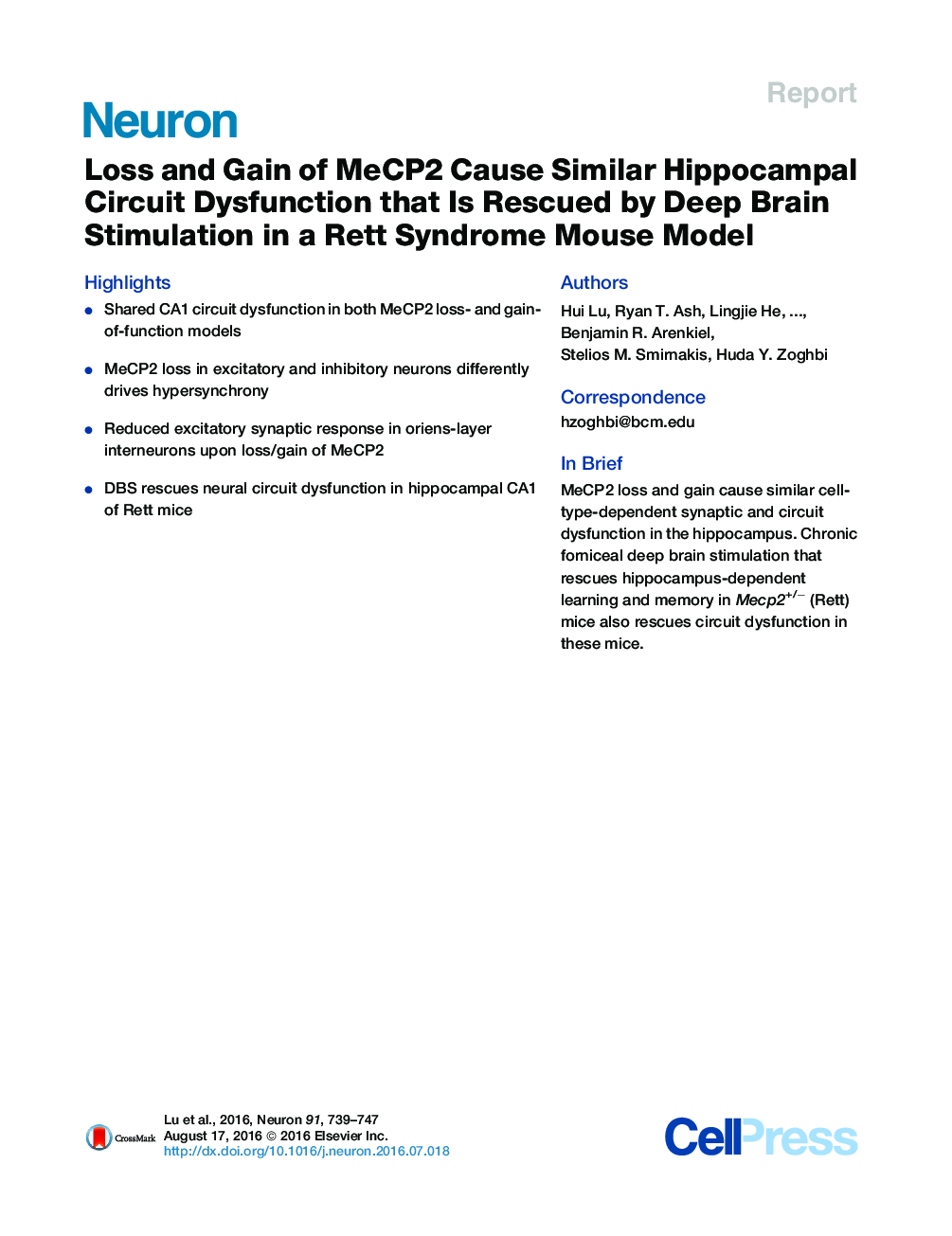| Article ID | Journal | Published Year | Pages | File Type |
|---|---|---|---|---|
| 4320655 | Neuron | 2016 | 9 Pages |
•Shared CA1 circuit dysfunction in both MeCP2 loss- and gain-of-function models•MeCP2 loss in excitatory and inhibitory neurons differently drives hypersynchrony•Reduced excitatory synaptic response in oriens-layer interneurons upon loss/gain of MeCP2•DBS rescues neural circuit dysfunction in hippocampal CA1 of Rett mice
SummaryLoss- and gain-of-function mutations in methyl-CpG-binding protein 2 (MECP2) underlie two distinct neurological syndromes with strikingly similar features, but the synaptic and circuit-level changes mediating these shared features are undefined. Here we report three novel signs of neural circuit dysfunction in three mouse models of MECP2 disorders (constitutive Mecp2 null, mosaic Mecp2+/−, and MECP2 duplication): abnormally elevated synchrony in the firing activity of hippocampal CA1 pyramidal neurons, an impaired homeostatic response to perturbations of excitatory-inhibitory balance, and decreased excitatory synaptic response in inhibitory neurons. Conditional mutagenesis studies revealed that MeCP2 dysfunction in excitatory neurons mediated elevated synchrony at baseline, while MeCP2 dysfunction in inhibitory neurons increased susceptibility to hypersynchronization in response to perturbations. Chronic forniceal deep brain stimulation (DBS), recently shown to rescue hippocampus-dependent learning and memory in Mecp2+/− (Rett) mice, also rescued all three features of hippocampal circuit dysfunction in these mice.
